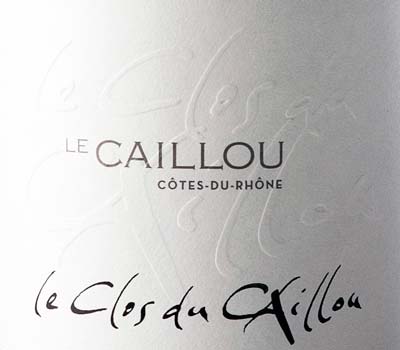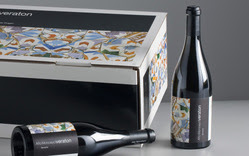JEAN VULLIEN Chignin-bergeron Roussette de savoie Altesse
Tenuta Sant’Antonio Valpolicella Superiore Ripasso Monti Garbi
Funaro Passo di Luna bianco
MUSTIGUILLO MESTIJAZE BLANCO
Lascaux Rosé L’Eclat
VULLIEN MONDEUSE
MUSTIGUILLO MESTIJAZE TINTO
Les Darrons rouge
Domaine Vincent Wengier Chablis
Clos de cailloux Côtes du Rhône Rosé
Fattoria di Basciano Chianti Rufina Riserva
ALTO MONCAYO VERATON GARNACHA
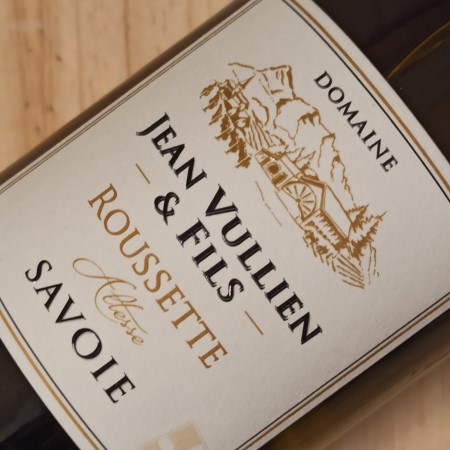 JEAN VULLIEN Chignin-bergeron Roussette de savoie Altesse(ORGANIC)
JEAN VULLIEN Chignin-bergeron Roussette de savoie Altesse(ORGANIC)
The eastern French region of the Savoie is one of the most exciting wine regions on the planet, and it’s near the top of my must-see places to go once we can get on airplanes and visit other countries again.
Savoie is blessed – a cool mountain climate on a warming planet, and about as idyllic a place to grow and make wine as one could ask for. Known more for skiing and other outdoor pursuits, the Savoie is not so well known as a wine-producing area, though within the area known as the Combe de Savoie, there are a handful of great producers.
With little-known grape varieties such as Jacquère, Mondeuse, and Altesse nestling alongside Pinot Noir, Roussanne, Chardonnay, and Gamay, the world of Savoie wines begs to be explored. I was astonished at the quality of Jean Vullien’s wines, especially when compared to most other producers in the area.
How were they producing such high-quality, clean, and fresh wines when so many others clearly couldn’t? It transpired that Jean Vullien learned viticulture in his native Bordeaux and his two sons, David and Olivier graduated at the renowned wine college, La Viti in Beaune.
The region’s best comes from a boomerang-shaped string of hillside villages between Grenoble and Albertville (site of the 1992 Winter Olympics) called the Combe de Savoie (Combe is a word of Celtic origin meaning a sharp, deep valley). Jean Vullien and his two sons, David and Olivier, tend 69 acres on the Combe in the villages of Chignin, Montmélian, Arbin, St-Jean de la Porte, and their hometown of Fréterive.
Eric Asimov, wine writer for the New York Times, recently extolled the virtues of the region: “(The Savoie) produces some excellent red wines, but mostly whites that are as cool, crystalline, and refreshing as a mountain stream. I’ve consumed quite a few Savoie whites over the last few weeks, and the best of them, without fail, made me feel as if I were in breezy meadows among the foothills, under the distant glowering crags of the Alps themselves. This transportive quality is a powerful feature of Savoie whites.”
The domain’s holdings include all of the region’s indigenous grape varieties, as well as strategically-placed parcels of Chardonnay and Pinot Noir. The wines range from a crisp, lemon and mineral Jacquère-based white that British wine author Andrew Jefford would categorize as “Muscadet of the Alps” to complex floral and spiced reds made from Mondeuse. In recent years, David and Olivier have also earned a reputation for their excellent Méthode Traditionelle sparkling wines. Though the Vulliens have been making wine for 40 years, the family is perhaps best known as a leader in another segment of the wine industry.
They farm 69 acres of grapes planted on the hillsides of the Combe de Savoie to the following varieties: Jacquère: 4.94 acres in the cru Montmélian – labeled Vin de Savoie Montmélian, Roussette aka Altesse: 6.18 acres in various parcels – labeled Roussette de Savoie, Chardonnay: 9.88 acres – labeled Vin de Savoie Chardonnay (best parcels for Cuvée Prestige), Roussanne aka Bergeron: 15 acres in the cru Chignin – labeled Chignin-Bergeron, Gamay: 8.15 acres – labeled Vin de Savoie Gamay, Pinot Noir: 8.9 acres – labeled Vin de Savoie Pinot Noir (best parcels for Cuvée Jeannine), and Mondeuse: 16 acres including parcels in the crus St-Jean-de-la-Porte and Arbin. All parcels are farmed practicing organic principles. Dark Jurassic limestone soils and black marl base with pebbly topsoil layer of scree (degraded limestone fragments that have accumulated over time from Massif des Bauges slopes)..
Roussette de Savoie Sheltered from the winds of the North on the slopes of Freterive and St Jean de la Porte, in the heart of the Combe de Savoie. The vineyard is composed of young and old vines. Sloping slopes, full sun south. Manual harvest. 100% Altesse. Total destemming. All fermentation and majority of élevage takes place in temperature-controlled stainless steel tanks. Malo-lactic fermentation carried out. Parker on an older vintage: A pungent nose of orange zest, buckwheat, nutmeg, and toasted hazelnuts leads to a subtly oily yet juicy and refreshing palate. Bright notes of lemon, citrus zest, chalk, and salt add invigoration to the lightly-toasted nut and grain and moderately ripe pit fruit flavors in the finish. Over the next couple of years, this will take on a lightly oxidized, flor-like patina, typical for the Altesse (a.k.a. Roussette) grape, but remain interesting and versatile.
Tenuta Sant’Antonio Valpolicella Superiore Ripasso Monti Garbi (Organic)
About two decades ago, the four Castagnedi brothers – Tiziano, Armando, Paolo, and Massimo – decided that they no longer wanted to tend their father’s vineyards.
They wanted to create a new, modern, and world-class winery that would bring pride to their little corner of the Veneto. They named their winery Tenuta Sant’Antonio and set out to make Amarone, Valpolicella, Ripasso, Passito, Soave, and Recioto di Soave wines, all from grapes grown on their mountaintop vineyards in Val d’Illasi and Valpolicella.
They’ve made tremendous progress in a country where the top wineries measure their tenure in centuries, not decades. While all of their wines have something to recommend, it’s the Tenuta Sant’Antonio Valpolicella Superiore Ripasso called “Monti Garbi” that is the perfect juxtaposition of price and quality.
The name Monti Garbi comes from a vineyard in Mezzane di Sotto in the eastern part of Valpolicella. Monti means “hills,” and Garbi is Venetian dialect for “rugged, arid, and poor,” which describes the poor calcareous and chalky soil of the vineyard.
It’s a blend of 70% Corvina, 20% Rondinella, and 10% mixed Croatina and Oseleta. As you might notice, none of these grapes’ names rolls trippingly off the tongue, which is one of the reasons that this wine, which should rightfully cost about $35, doesn’t.
Ripasso” is a unique technique that “re-passes” the Valpolicella wine onto the dried grape skins of Amarone, still warm and rich in sugar after fermentation. This lends the Ripasso greater texture and more powerful flavors. Imagine aromas of red berries and pipe tobacco along with cleansing acidity, and you’ll have a pretty good idea of what to expect. Pour a glass for your friends, and they’ll swear you spent twice as much as you actually did.“
90 points, Robert Parker’s Wine Advocate: Packaged in a heavy glass bottle, the Tenuta Sant’Antonio 2018 Valpolicella Superiore Ripasso Monti Garbi is a mid-weight expression with a classic playlist of dried cherry and plum that segue to mild spice, tar and toasted chestnut. Ripasso is the quintessential midway wine between Valpolicella and Amarone, and its all-rounder appeal means it can pair with a wide variety of foods to enjoy in any informal occasion. The blend is 70% Corvina and Corvinone, 20% Rondinella, 5% Croatina and 5% Oseleta. It sees 12 months of oak aging.
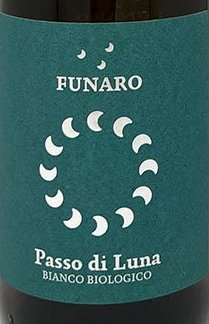 Funaro Passo di Luna bianco – organic and biodynamic
Funaro Passo di Luna bianco – organic and biodynamic
Funaro is a family-owned organic winery in Santa Ninfa in the Trapani province on the Italian island of Sicily (‘Sicilia’). The estate was founded in 2003 when the Funaro siblings – Tiziana, Clemente, and Giacomo – decided to make wine from vineyards that had been in their family for three generations. Wines are made under the Terre Siciliane IGT.
They farm 85 acres of which 60 acres are vineyards (on two sites–see below) and 15 acres are olives, plus arable land, vegetable plots, and fruit orchards.
The Funaro enterprise consists of two farm estates in Western Sicily, not far from the coastal towns of Marsala and Trapani.
In addition to building an eco-friendly winery facility complete with solar electricity and a natural wastewater recycling system, they obtained organic certification for their vineyards, olive groves, and orchards in 2011.
Fermented in stainless steel and picked during the cooler hours of the day to retain freshness. Citrusy and floral on the nose, with honeysuckle, zippy red grapefruit, and almond skins. Very fruit-driven and aromatic, a perfect refreshing wine for the hot summer months!
This steely, crisp, floral white combines Insolia and Zibbibo is fermented and aged only in steel tanks to preserve freshness. Hardly just a “quaffer,” however, there’s some nice texture to this wine, a juicy midpalate with notes of peach, nectarine, white flowers, and a hint of chalk. Refreshing, mineral, and delicious—perfect for pairing with grilled octopus or Sicilian-style tuna with blood oranges.
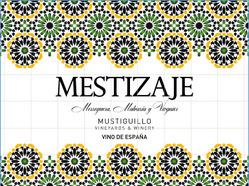 MUSTIGUILLO MESTIJAZE BLANCO – Organic and Biodynamic
MUSTIGUILLO MESTIJAZE BLANCO – Organic and Biodynamic
In 2017 I visited Spain on a wine-buying trip with the folks at Valkyrie Imports; our second stop was in Utiel, in Valencia, to meet with Toni Sarrion, the proprietor and winemaker at Mustiguillo, an organic/biodynamic winery specializing in native grapes – mainly Merseguera for the whites and Bobal for the reds.
Tony is a champion of resurrecting these almost lost grapes. His Merseguera grapes come from plots planted at 3000 feet above sea level that he grafted over from Bobal vines that couldn’t adapt to the higher altitude.
His entry-level blend is called Mestijaze for both the red and white, and the white is a blend of 75% Merseguera, with lesser amounts of Viognier and Malvasia. The wine undergoes native yeast fermentation in tank and is aged sur lies in stainless steel.
The Viognier is immediately apparent on the nose with apricot, tropical fruit, and honey while underlying notes of white peach, scented flowers, and citrus hints creep in from the Merseguera. The tightwire balance between the fleshy Viognier/Malvasia and taut Merseguera continues with a fresh, fruity, and floral attack and an unctuous mid-palate that is kept in check by bracing acidity. Truly one of a kind, Mestizaje shows its unique personality is this pleasant, crispy, imminently friendly wine Mustiguillo is an organic/biodynamic Spanish winery specializing in native grapes – mainly Merseguera for the whites and Bobal for the reds.
Lascaux Rosé L’Eclat de garrigue – Organic and biodynamic
The vineyards of Château de Lascaux have been in the family for thirteen generations. The name of the domain, “Lascaux” comes from a limestone specific to the domain’s vineyard sites.
Jean-Benoît Cavalier took over the property in 1984, just after finishing a degree in Agricultural Engineering. In 1990, he consolidated the vineyards, restructured the ancient cellars, and created the official domain, Château de Lascaux. Today, over twenty-five years later, the domain has expanded from 60 to 210 acres of vineyards, surrounded by 750 acres of forest, filled with green oaks, pines, and garrigue**.
The quiet isolation of this part of the region, coupled with its proximity to both the sea and the mountains, makes this microclimate so unique. It is nestled along the foothills of the Cevennes, a mountain range that sits in the heart of the Midi. These foothills protect the vines from the cool Mistral and Tramontagne winds and bring more rain to an otherwise dry climate. That this temperate zone brings a long, slow ripening of the grapes only adds to the wines’ complexity. The stony soil lends finesse and freshness to his wines, giving the reds greater aging potential than Syrah-based wines grown in other Languedoc soils.
The proliferation of garrique certainly is reflected in the aromatics, where notes of laurel, thyme, rosemary, réglisse, and mint are present in the wines. Jean-Benoît is passionate about supporting the richness and diversity of this ecosystem, so the domain’s conversion to organic viticulture was a logical choice. There is a freshness and purity, finesse, and complexity in the Lascaux wines that is rare in this wild landscape. The consistency of the winemaking, the quality of their wines, and the great values they present make this domain a treasure.
L’éclat de Garrigue is a blend of Cinsault, which brings brightness and balance, Grenache, which gives a silky mouthfeel and Syrah, which gives the wine finesse and delicious fruity notes
The grapes are harvested mechanically and quite early in the morning depending on the plot. Once harvested, the grapes are partially destemmed and then cold-pressed. This is followed by a selection of juices and a cold settling without excess before maturing in stainless steel vats for four to five months
VULLIEN MONDEUSE (ORGANIC)
The eastern French region of the Savoie is one of the most exciting wine regions on the planet, and it’s near the top of my must-see places to go.
Savoie is blessed —a cool mountain climate on a warming planet, and about as idyllic a place to grow and make wine as one could ask for. Known more for skiing and other outdoor pursuits, the Savoie is not so well known as a wine-producing area, though within the area known as the Combe de Savoie, there are a handful of the best producers.
With little-known grape varieties such as Jacquère, Mondeuse, and Altesse nestling alongside Pinot Noir, Chardonnay, and Gamay, the world of Savoie wines begs to be explored. I was astonished at the quality of Jean Vullien’s wines, especially when compared to most other producers in the area.
How were they producing such high-quality, clean, and fresh wines when so many others clearly couldn’t? It transpired that Jean Vullien learned viticulture in his native Bordeaux and his two sons, David and Olivier graduated from renowned wine college, La Viti in Beaune.
The region’s best come from a boomerang-shaped string of hillside villages between Grenoble and Albertville (site of the 1992 Winter Olympics) called the Combe de Savoie (Combe is a word of Celtic origin meaning a sharp, deep valley). Jean Vullien and his two sons, David and Olivier, tend 69 acres on the Combe in the villages of Chignin, Montmélian, Arbin, St-Jean de la Porte, and their hometown of Fréterive.
The Domain’s holdings include all of the region’s indigenous grape varieties, as well as strategically-placed parcels of Chardonnay and Pinot Noir. The wines range from a crisp, lemon and mineral Jacquère-based white that British wine author Andrew Jefford would categorize as “Muscadet of the Alps” to complex floral and spiced reds made from Mondeuse. In recent years, David and Olivier have also earned a reputation for their excellent Méthode Traditionelle sparkling wines. Though the Vulliens have been making wine for 40 years, the family is perhaps best known as a leader in another segment of the wine industry.
Since 1890, Vullien Pépinière Viticole (vine nursery) has been supplying young vines to growers throughout France. In fact, they were the source for about 25% of the Chardonnay planted in Chablis after the ravages of phylloxera.
Climatically, the Savoie is more challenged than many other wine producing areas of France, hence the different native grape varieties. Jacquere, which is widely available, drinks like a dry Sauvignon Blanc and is superb with shellfish and seafood. Gamay, which is the principal variety of Beaujolais, is comfortable in this slightly cooler climate too. They are succulent, light and full of fruit with the Gamay Rose airing more on the side of a dry rose. Both work extremely well with Savioe dishes such as raclette, tartiflette, tarte flambee (flammekueche) and cheese fondues.
Their Mondeuse bottling is a winner- grown on the dark Jurassic limestone and black marl soils of Savoie. The grapes come from 16 acres of sustainably farmed vines, including parcels in the crus of St-Jean-de-la-Porte and Arbin. All grapes are de-stemmed and after fermentation, the wine is aged in 100% French oak barrels for 12 months.
The resultant wine is wonderfully complex with bright floral and spice notes to complement the fresh red and black fruit flavors. Pair with chili or a hearty beef stew. Mondeuse is the mountain cousin of Northern Rhône Syrah—literally, in the sense that DNA analysis has linked it to Syrah, and figuratively, in that it drinks like the prettier, wilder, barefoot version bedecked in Alpine wildflowers.
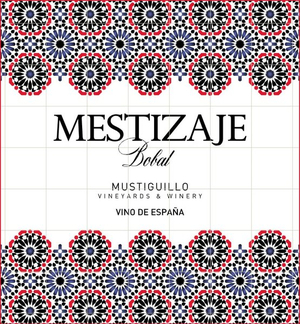 MUSTIGUILLO MESTIJAZE TINTO – organic and biodynamic
MUSTIGUILLO MESTIJAZE TINTO – organic and biodynamic
Bobal is one of the greatest and most under-rated Spanish grape varieties, and is now on the cusp of a renaissance in the Mediterranean vineyards to mirror that of the Mencia varietal in Bierzo and other parts of North-West Spain.
Mustiguillo is a family project, dedicated to organic viticulture and the pursuit of elegance and finesse rather than excess oak and the like. A well-rehearsed mantra maybe, but one that does not have many adherents of such pedigree. Consider this a reintroduction to Bobal, and its champion, Toni Sarrion. In the late 1990’s, Toni began a one-man crusade to save this indigenous variety and coax it from obscurity and rusticity to the forefront of truly world-class wines.
Ever evolving and pushing the quality level forward, Mustiguillo has moved away from the use of overt American oak as seen in previous vintages in favor of concrete and French oak for wines of finesse and balance, realizing the potential of Bobal from the unique terroir of El Terrerazo. Mustiguillo was recognized for its extraordinary efforts by Wine & Spirits as one of the Top 100 Wineries of 2012.
The varieties are vinified separately and undergo malolactic in a mixture of oak and stainless steel. The final blend spends 11 months in French oak.
This 2019 is not merely a tangy, smoky, lip-smacking joy to drink now but is a sneakily complex wine that will likely age nicely over the short term. The Vullien family holdings include 16 acres of Mondeuse in St Jean de la Porte and Arbin—the only two crus within Savoie that produce exclusively red wine from Mondeuse in a region otherwise dominated by whites.
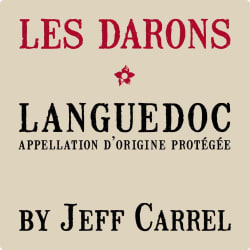 Les Darrons by jeff carrell rouge – Sustainable
Les Darrons by jeff carrell rouge – Sustainable
Winemaker and grower Jeff Carrel studied Oenology in France, vinifying in the Loire, Alsace, and the Languedoc regions where he took up a role as Technical Director for a Bordeaux wine merchant before taking complete charge of the domaine. Today Jeff works mainly in Languedoc Roussillon but also in Bordeaux, Beaujolais and Burgundy. Jeff develops original wines with precision that deliver a sense of place at a great value. An accessible wine with loads of character, “Les Darons” is packed with ripe, red and dark fruit aromas, with plenty of spice and a streak of underlying minerality.
Enjoy this classic, unoaked red with a wide range of everyday meals. This wine is made up of 75% Grenache and 5% Carignan, harvested by hand, and 20% Syrah. The grapes are destemmed and crushed before being blended, with extraction by pigeage. They come from old vines, hence the name “les darons” which means “the fathers”.
90-92 points, Jeb Dunnuck: “The 2018 Languedoc Les Darons checks in as a blend of 75% old vine Grenache, 20% Syrah, and 5% Carignan that’s from a mix of the La Clape, Agly Valley, Minervois, Saint Chinian, and Taileran regions of the Languedoc and Roussillon. This elegant, beautifully perfumed red has sweet cherry and black raspberry fruits intermixed with ample spice, candied violets, and ground pepper. It’s elegant, silky and seamless on the palate, with beautiful purity and an upfront, charming style.”
 Domaine Vincent Wengier Chablis – Organic
Domaine Vincent Wengier Chablis – Organic
Domaine Vincent Wengier is located in Préhy, on the left bank of the Serein, in the southwestern part of Chablis.
Vincent is the third generation to farm this land, but the first to bottle his own wines.
From the Bourgogne Aligoté, through the Chardonnay, and into the Chablis, the wines from Vincent Wengier are full of tension and energy. Wengier’s winemaking style prefers no oak and prolonged aging on the lees in stainless steel, this gives the fruit-forward wines a beautiful texture and savory complexity that keeps you coming back to your glass. The Chablis comes from the estate’s 35-year-old vines which are planted on the region’s revered Kimmeridgian soils and the wine is embellished with a driving mineral backbone that lifts the fruit and lingers so cleanly.
Since taking over from his parents in 1998, he has transitioned to organic farming while doubling his vineyard size from 29 to over 65 acres.
He’s a new player in Chablis who is making wines worth talking about. After selling grapes to négotiants for 20 years, he started his own label in 2018, following his “passion to make wine and talk about my wine.”
He still sells to La Chablisienne, the historic quality cooperative, as a form of income insurance while he’s starting up – a wise strategy considering Chablis’s weather issues (this is the second consecutive April damaging frost hit the area), and a prescient one that helped mitigate two years when the pandemic canceled trade activities.
Most plots surround the winery on Chablis-classic Kimmerdgian soils with prime southern exposure. Vine age is 35 years old on average.
Pressing is ancestral, with an open press being used, which allows for the wines to resist oxidation in the future, then transferred to steel where it spontaneously ferments and rests on its lees for a year. This extended lees aging increases mouthfeel and texture, resulting in delightfully lush fruit and minerality that seemingly leaps from the glass.
Elegant but not lean, it’s a wonderful glass of Chablis with savory herbal nose with anise and saline notes, very pretty and complete with direct fruit and fresh, mouthwatering acidity. Says Vincent: “I am striving for a more ‘normal’ level of acidity that is still the Chablis signature but is balanced with fruit ripeness and texture.”
90 points, Decanter: From older vines, Vincent’s Chablis reveals a complex nose with plenty of citruses (kumquat and fresh lemon), minerals, and a touch of smoke. The mouth is creamy with nice acidity, offering a lovely finish combining more citrus and more mineral.
Clos de cailloux Côtes du Rhône Rosé (organic and biodynamic)
Wines from Le Clos du Caillou are Rhône blends at their most intense. Concentrated and richly textured, these organically raised, older-vine wines capture the spice and silk of old-vine Grenache grown on the region’s finest terroirs. Each wine too reflects the native perfumes of the south, the “garrigue” blend of thyme, rosemary, and lavender that grows wild among the estate’s vines.
Of all the terroir in the Côtes du Rhône appellation, the “clos” of Caillou has to be one of the most exceptional. Completely surrounded by Châteauneuf-du-Pape vineyards, this walled parcel of land was intentionally left out of the appellation by the owner, following a bureaucratic spat back in 1936. What this means today is that Caillou’s Côtes du Rhône wines are qualitatively the same, with regard to terroir and exposition, as top Châteauneuf wines.
Caillou’s devotion to the character of the land (through bottling wines according to terroir) and its dedication to organic and biodynamic viticulture are what captivated us so many years ago when we first encountered these wines; and over the years, this fidelity to soil and soul has only intensified.
The estate in Courthézon, in the northeastern part of the Châteauneuf-du-Pape appellation, boasts a mix of terroirs with a predominance of sand, which gives Caillou wines their silky elegance and fine-grained texture. Importantly, the “clos,” or walled portion of the estate where vines for Côtes du Rhône wines are grown, shares the same terroir with Caillou’s Châteauneuf-du-Pape vineyards. The estate has been practicing biodynamic viticulture since 2003, and was certified organic as of 2010.
Grapes are harvested by hand and manually sorted in both the fields and at the cellar, then partially destemmed and fermented on indigenous yeasts in cement tanks. Wines are aged in a combination of large foudre, demi-muid and barrel, depending on the wine and the vintage, for approximately 15 to 18 months in the estate’s cool underground cellars, and are bottled unfined and unfiltered.

Fattoria di Basciano Chianti Rufina Riserva (Sustainable)
Since the beginning of the 20th century, the Masi family has owned the Fattoria di Basciano estate. The Masi family has been making wine here for three generations. They are located right in the heart of the Chianti Rufina area, on the top of a hill overlooking the Argomenna Valley on one side, and the right bank of the Sieve river on the other.
The vineyards are at an elevation of almost 1000′ above sea level, lying on very stony soil, locally known as “Galestro”. The micro-climate is ideal for the ripening of grapes and olives. It is dry, with light breezes, marked by scarcity of rain and a remarkable range of night and day temperature in summertime. The 200-acre property is divided by vineyards (100 acres), olive orchards, and forest land (50 acres each).
Since the beginning of the 20th century the Masi family has owned the Fattoria di Basciano estate. They are located right in the heart of the Chianti Rufina area, on the top of a hill overlooking the Argomenna Valley on one side, and the right bank of the Sieve river on the other.
93% Sangiovese 7% Colorino. Grapes are picked about 7-10 days after the harvest for their entry-level Chianti Rufina. Fermentation takes place at a temperature between 25 and 28°C. Maceration (skin contact) of about 25 days. The malolactic fermentation is completed in tanks, then the wine stays for 18 months in French oak barrels, half new and half one or two years old.
Deep ruby red color. Concentrated nose showing plum and berry character. On the palate full and round, with soft tannins and a long, fruity, peppery finish.
92 points, Parker: Paolo Masi’s (Fattoria di Basciano) 2016 Chianti Rufina Riserva is a linear and elegant wine. The bouquet starts off with dried cherry and dark fruit, but just as much attention is given to nuanced aromas of crushed stone or brimstone. The mouthfeel shows medium intensity, and the tannins add some dryness; however, this wine produces very food-friendly qualities, especially if pasta or lasagna is on the menu.
ALTO MONCAYO VERATON GARNACHA (Sustainable)
What do Cannonau, Garnacha, Aragones, and Bois Jaune have in common? They are all regional terms for one of the world’s most beloved and terroir-expressive grapes: Grenache.
The Spanish winery Alto Moncayo was created in 2002 with the goal of becoming the archetype for high-quality wines made from the Garnacha grape.
Located in the heart of the Campo de Borja DO, they source grapes from 92 hectares (227 acres) of high elevation native mountain strains of Garnacha. These vines were planted decades ago in the Moncayo foothills. El Moncayo peak, the winery’s namesake, is the highest in the Iberian Mountain range. Here, the slate and clay soils seriously lack nutrients. This may not sound like a recipe for great grape growing, but it is the ideal environment for a high-quality wine: roots grow deep, vines work hard, and plants produce less fruit. However, what fruit is produced is jam-packed with tons of flavor, complexity, and balance.
Traveling Aussie winemaker Chris Ringwald is the man behind the three Moncayo offerings: Aquilon, Alto Moncayo, and Veraton. All of their bottlings showcase distinct celebrations of the Garnacha grape. Our feature this month, the Veraton, is their value offering and is a great introduction to this acclaimed producer.
Garnacha for this bottling comes from 30-50-year-old vines. Perfect clusters are hand-harvested and carried in small crates to prevent crushing and premature fermentation. The grapes are again sorted on triage tables. Fermentation takes place with neutral yeast and the wine matures in 80% new and 20% second use French and American barrels for 16 months, imparting great amounts of oak flavor. This full-bodied wine packs a punch, showcasing big, assertive tannins. Look for notes of smoke, coconut, cinnamon, dried blueberries, and mocha on the extremely long finish.





